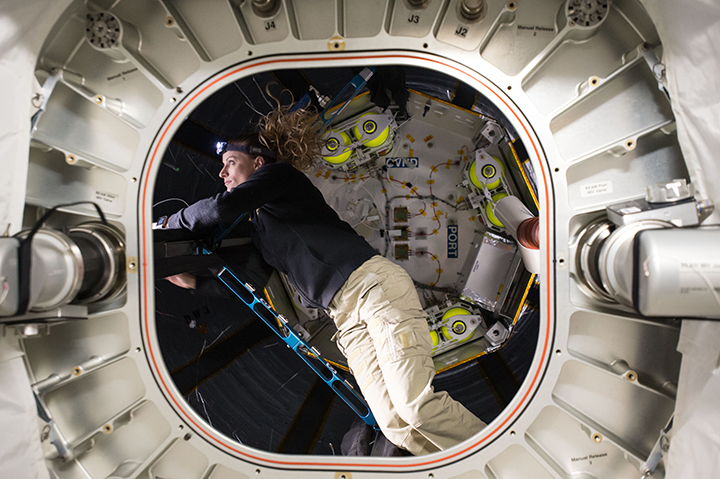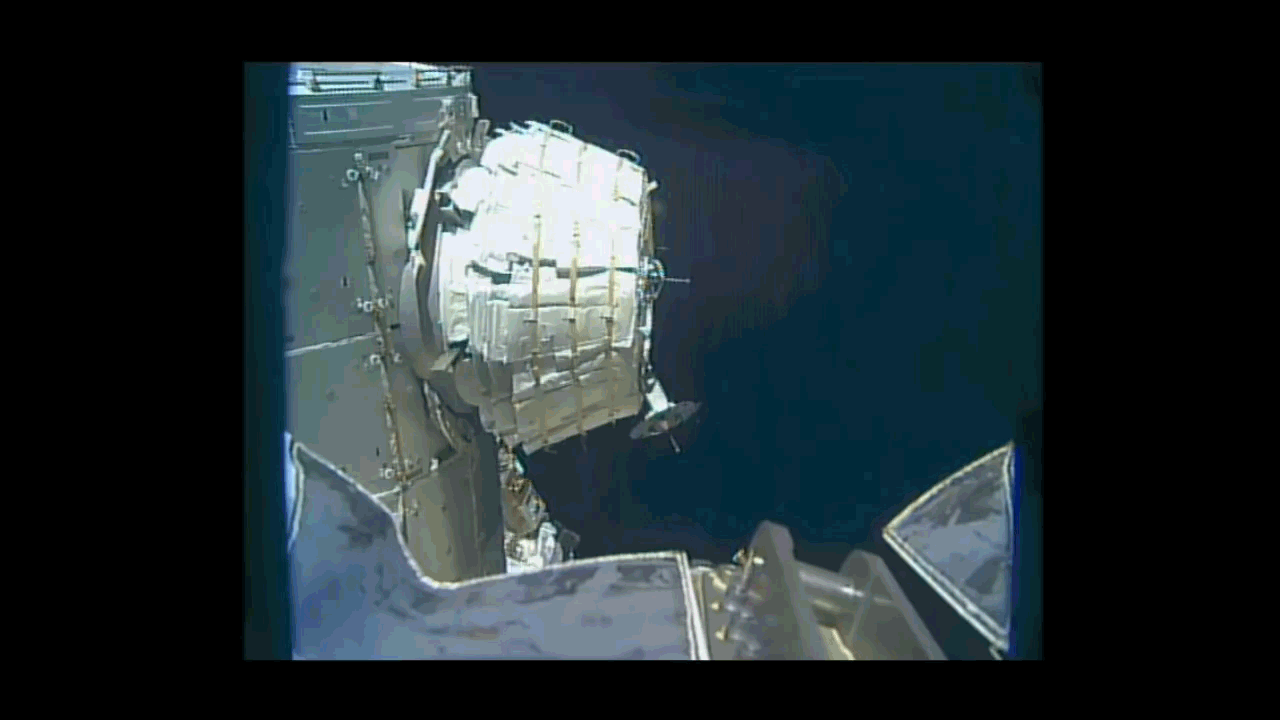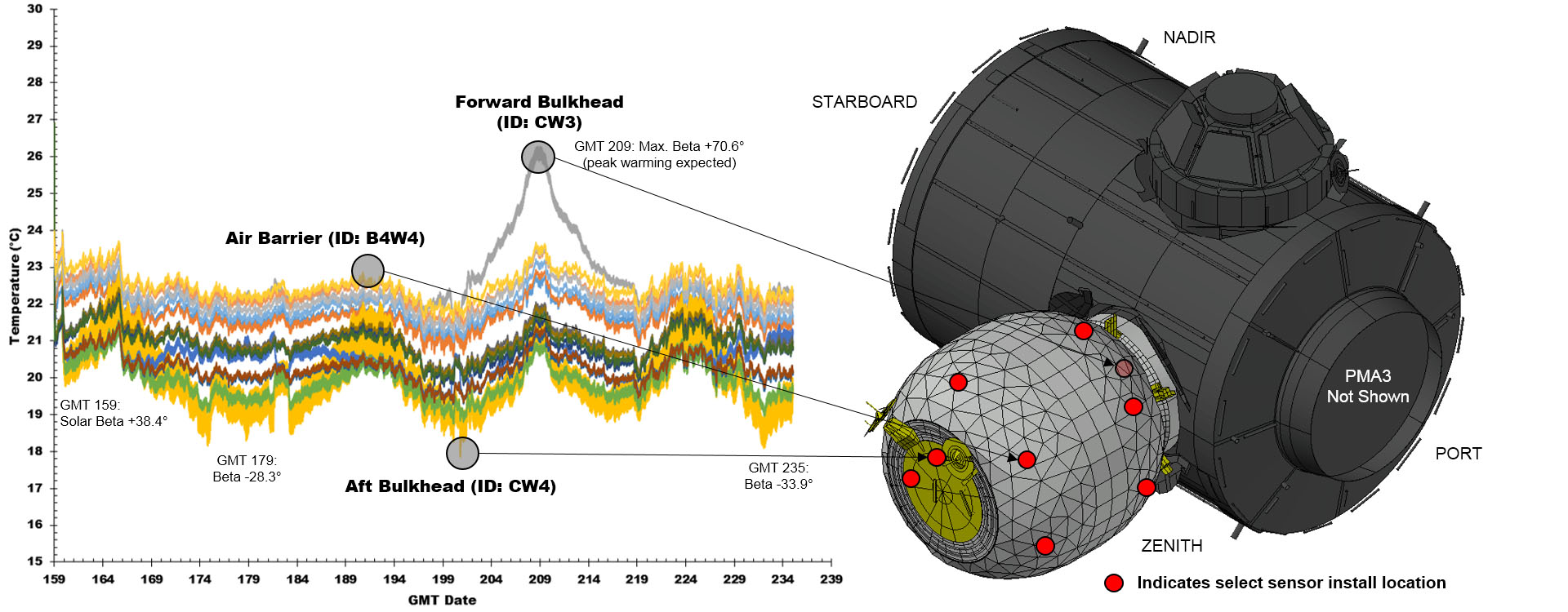Blow It Up: Inflatable Space Station Habitat Shows Promise in Early Tests

An inflatable space habitat that could save weight and volume on future missions is showing how well it can do its job. The verdict: So far, it works, and that gives the habitat a better chance of being part of future space efforts.
Called the Bigelow Expandable Activity Module, or BEAM, the habitat is an inflatable spheroid made of fabric that starts off folded into a shape like a flattish cone with the top cut off. It was originally launched to the International Space Station (ISS) on April 8.
The first tests were in May. Crewmembers aboard the ISS expanded BEAM, using low pressure, and then allowed the air tanks inside the habitat to open and pressurize it to the same level as the space station — approximately one atmosphere. [The Bigelow Expandable Activity Module in Pictures]

Sensors inside the BEAM checked the module's temperature and how well its structure was responding to pressure. Astronauts didn't enter the BEAM until June, though, as there were extensive checks for leaks. (They found none.) NASA astronaut Jeff Williams was the first to enter the BEAM, and he added extra sensors to monitor the atmosphere inside it.
So far, NASA and BEAM's builder, Las Vegas-based company Bigelow Aerospace, say that the module is performing as expected. Besides offering extra space, it also provides protection from radiation that's similar to what's offered by the other modules on the ISS, NASA officials said.


It hasn't all been roses; an early test of the BEAM showed it inflating more slowly than expected, which was chalked up to the module being folded up inside its launch fairing for a year. In a press release, Steve Munday, BEAM manager at NASA’s Johnson Space Center in Houston, said the BEAM also was warmer than astronauts thought it would be. One thought is that the fabric layers aren't in contact with each other as much as designers thought they would be, which makes the thermal insulation more efficient.
Warmer is probably better, though, Munday said, because a cooler-than-expected BEAM would suffer from condensation on the interior walls.
Get the Space.com Newsletter
Breaking space news, the latest updates on rocket launches, skywatching events and more!
The BEAM also hasn't had any collisions with space debris, nor has it put any additional out-of-the-ordinary loads on the ISS life support or power systems.
Further analysis will focus on the effects of cosmic rays on the interior, to see what additional shielding might be needed on deep-space missions. If the BEAM works well, it could help pave the way to habitats that are folded into the fairing of future spacecraft, saving space and weight, NASA officials said.
Follow us @Spacedotcom, Facebook or Google+. Originally published on Space.com.
Join our Space Forums to keep talking space on the latest missions, night sky and more! And if you have a news tip, correction or comment, let us know at: community@space.com.

Jesse Emspak is a freelance journalist who has contributed to several publications, including Space.com, Scientific American, New Scientist, Smithsonian.com and Undark. He focuses on physics and cool technologies but has been known to write about the odder stories of human health and science as it relates to culture. Jesse has a Master of Arts from the University of California, Berkeley School of Journalism, and a Bachelor of Arts from the University of Rochester. Jesse spent years covering finance and cut his teeth at local newspapers, working local politics and police beats. Jesse likes to stay active and holds a fourth degree black belt in Karate, which just means he now knows how much he has to learn and the importance of good teaching.









